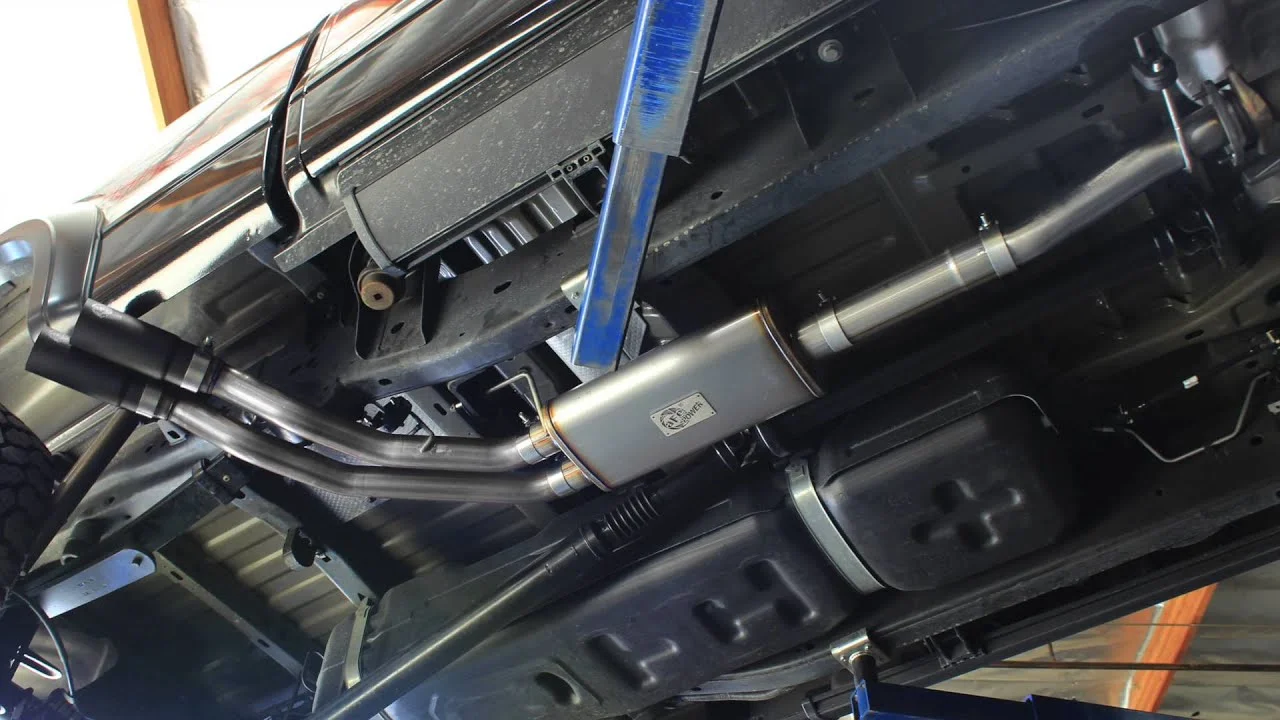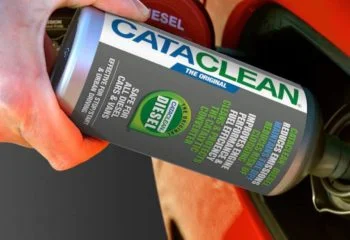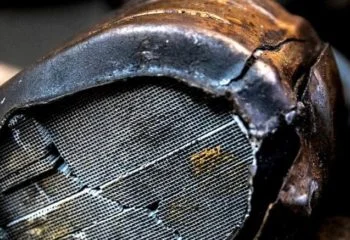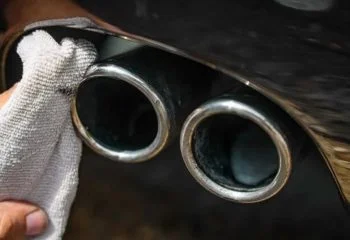When it comes to adding performance enhancements to your vehicle, there are many options to choose from. One popular choice is a cat back exhaust system. But what is a cat back exhaust system?
A cat back exhaust is a great way to improve the performance of your car. By replacing the standard exhaust system with a cat back exhaust, you can achieve improved gas mileage, more power, and a deeper sound.
When shopping for a cat back exhaust, it is important to choose one that is made from high-quality materials and fits your car’s make and model.
This article will explain the basics of this system and how does it work? And what are the pros and cons of installing one? We’ll take a look at all of that, as well as give you an idea of the cost to install a cat back exhaust.
What's in this post?
What is a cat back exhaust system and how does it work?
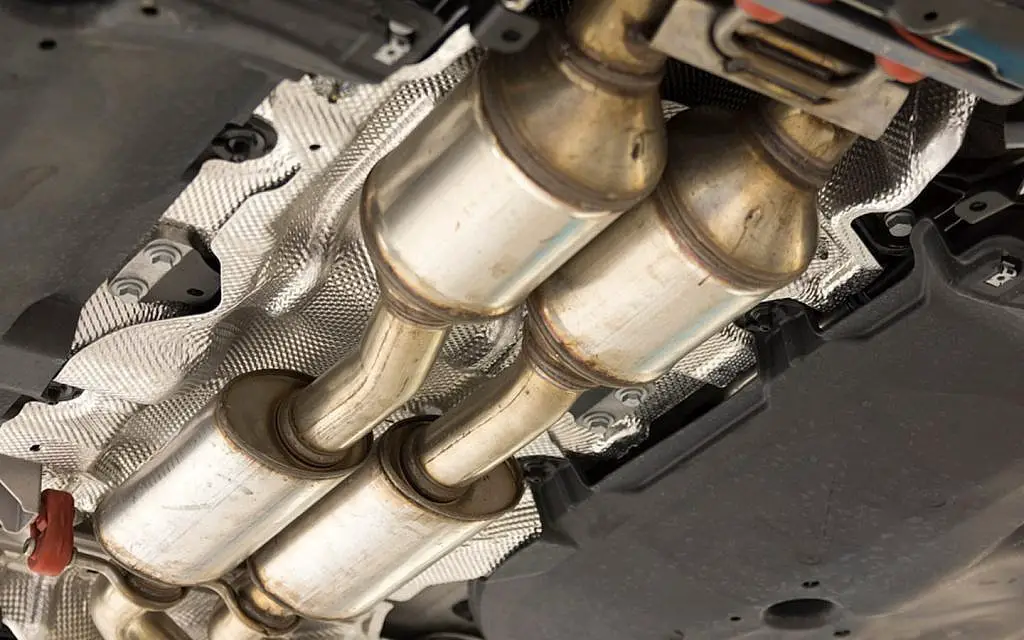
A cat back exhaust system is a type of aftermarket car exhaust that replaces the portion of the exhaust system between the catalytic converter and the muffler.
Cat-back systems are designed to improve engine performance and noise levels, and are popular among car enthusiasts.
The term “cat back” refers to the fact that the system starts at the “back” of the catalytic converter. Cat back systems typically include a new muffler, as well as new pipes and tips.
In some cases, they may also include minor modifications to the catalytic converter itself. Cat back exhaust systems can be purchased from most aftermarket automotive parts retailers.
A cat-back exhaust system is made up of several parts, including the muffler, intermediate pipe, and tailpipe.
The muffler is responsible for reducing the noise produced by the engine, while the intermediate pipe helps to get the exhaust gases away from the engine.
The tailpipe is the final section of the exhaust system, and it helps to disperse exhaust gases into the atmosphere.
In order to function properly, a cat-back exhaust system must be made from high-quality materials that can withstand high temperatures and vibrations. They are usually made from stainless steel or titanium.
Additionally, the system must be properly installed in order to prevent leaks and maximize performance.
So how does it work? The simplest way to understand a cat-back system is to think of it as an extension of the factory exhaust system. It starts at the catalytic converter and runs all the way back to the tailpipe.
The system works by replacing the stock catalytic converter with a high-flow unit. This allows exhaust gases to flow more freely, resulting in increased power and torque.
Types of cat back exhaust system?
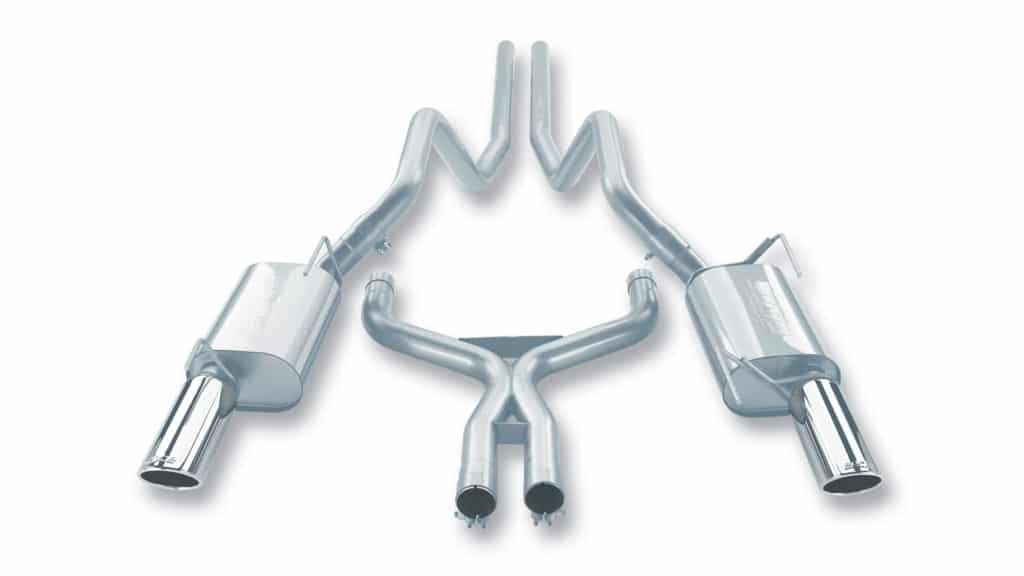
There are two main types of cat-back exhaust systems: single and dual.
Single exhaust
Single exhaust systems are the most common and consist of a single muffler and tailpipe. Typically, these systems are employed on smaller vehicles with four-cylinder or inline-four engines.
While they are less expensive than dual exhausts, single exhausts are not as efficient at removing pollutants from engine exhaust.
As a result, they are typically equipped with catalytic converters to help reduce emissions. In addition, single exhaust systems often produce more noise than dual exhausts, making them less popular with drivers who value a quiet ride.
However, advances in muffler technology have made single exhausts much quieter in recent years, making them a more viable option for many drivers.
Dual exhaust
Dual exhaust systems have two mufflers and tailpipes and are often used on high-performance vehicles. Dual exit systems are typically more expensive than single exit systems, but they offer a number of benefits.
Additionally, dual exhaust systems can improve engine performance. By having two exit points for exhaust gases, the engine can breathe more freely, resulting in increased power and efficiency.
Dual exhaust systems can provide a deeper and more aggressive growl sound than a single exhaust system, and can also improve engine power by increasing airflow.
Lastly, dual exhaust systems offer a distinctive look that can set a car apart from the crowd.
For these reasons, dual exhaust systems are typically more expensive than single exit systems, but they offer a number of benefits that make them worth the investment.
Dual Exit
A dual exit exhaust is a modification of the single exhaust system that has two exhaust tips instead of one. While some believe that this provides a performance advantage, there is no evidence to support this claim.
In fact, most experts agree that a dual exit exhaust actually offers no benefits over a single exhaust system.
The only real difference is aesthetic; some people simply prefer the look of two exhaust tips. If you’re considering a dual exit exhaust for your vehicle, it’s important to weigh the pros and cons carefully.
There’s no point in spending extra money on an upgrade that won’t actually improve your car’s performance.
No matter which type of system you choose, it is important to make sure that it fits your car properly.
If the system is too large or too small, it can cause problems with installation, as well as decreased performance.
Useful read: What is EGR Delete and Its Pros and Cons
Pros of cat back exhaust system
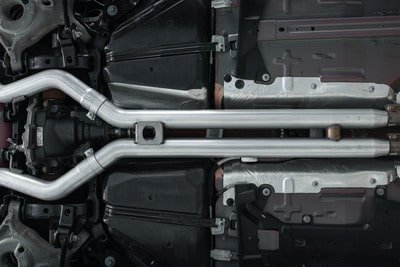
There are a number of benefits to upgrading to a cat-back exhaust system.
Increase horsepower and torque
The biggest benefit of a cat-back system is the increase in horsepower and torque. By increasing the flow of exhaust gases, the engine can breathe more freely, resulting in increased power.
A well-designed cat-back system can add 10-20 horsepower to your vehicle, making it a great way to improve performance without breaking the bank.
Improve fuel economy
Another benefit of a cat-back system is improved fuel economy.
By freeing up the flow of exhaust gases, the engine doesn’t have to work as hard to expel them. This reduced strain on the engine can lead to slightly better fuel economy.
Of course, the amount of improvement will vary depending on your car and driving habits, but it’s still a nice perk.
Improve sound
A cat-back exhaust system is one of the best ways to improve the sound of your car.
By replacing the factory catalytic converter with a high-flow unit, you can let your engine breathe more freely, resulting in a deeper, more aggressive sound.
If you’re looking for a way to make your car stand out from the crowd, this is it.
Easy to install
Another advantage of a cat-back system is that it’s relatively easy to install.
In most cases, the entire system can be installed in a matter of hours, and doesn’t require any special tools or skills. If you’re looking for a quick and easy way to improve your car’s performance, a cat-back system is a great option.
Reduce weight
A cat-back system can also help to reduce the weight of your car. By replacing the heavy stock muffler with a lighter aftermarket unit, you can take some unnecessary weight off of your car. This can lead to slightly improved acceleration and handling.
Better exhaust flows
One of the main reasons to upgrade to a cat-back exhaust system is to improve exhaust flow.
The stock exhaust system on most cars is designed for quiet operation and low cost, not for performance.
As a result, the stock system often includes features that restrict airflow and reduce power. A cat-back system eliminates these restrictions, allowing your engine to breathe more freely and produce more power.
Legal in 50 states
In the past, aftermarket exhaust systems were often considered illegal in many states due to their loud noise.
However, advances in muffler design have resulted in systems that are much quieter than their predecessors. As a result, cat-back exhaust systems are now legal in all 50 states.
So, if you’re looking for a way to make your car sound better without breaking the law, a cat-back system is a great option.
Useful read: What is Resonator on Exhaust? What is Resonator Delete and It Cost?
Cons of the cat back exhaust
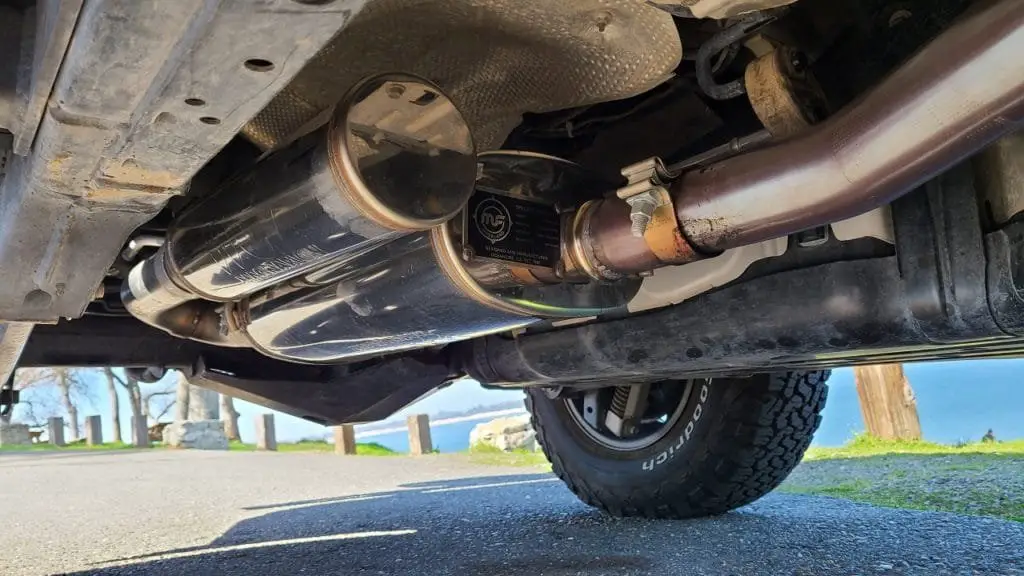
There are a few potential drawbacks to upgrading to a cat-back exhaust system.
Increased noise
The biggest downside of a cat-back system is the increased noise. The increased flow of exhaust gases creates a deeper and more aggressive sound that some people find unpleasant.
If you’re looking for a quiet and subdued exhaust note, a cat-back system is probably not the best option.
Expensive
Another potential drawback is the cost.
A quality cat-back system can cost several hundred dollars, which is more than many people are willing to spend.
Of course, the increased performance and sound can be worth the extra cost for some people, but it’s something to keep in mind.
Potential problems with fitment
Another thing to keep in mind is that a cat-back system may not fit your car perfectly.
In some cases, the system may be too large or too small, which can cause problems with installation and decreased performance.
Make sure to do your research before buying a cat-back system to make sure it will fit your car properly.
As you can see, there are both pros and cons to upgrading to a cat-back exhaust system. Ultimately, the decision of whether or not to upgrade is up to you.
If you’re looking for a way to improve performance and sound, a cat-back system is a great option.
However, if you’re concerned about increased noise or expense, you may want to stick with the stock system.
When should I install it?
Most people install a cat-back system when they’re looking to improve the sound of their car.
If you’re simply looking for a way to make your car sound better, there’s no need to wait – you can install a cat-back system at any time.
However, if you’re looking to improve performance, it’s best to wait until you’ve made other upgrades.
Installing a cat-back system on a stock car will not result in a significant increase in power.
In most cases, it’s best to wait until you’ve installed other performance upgrades, such as a high-flow air filter or intake manifold, before upgrading to a cat-back system.
This will help ensure that your car is able to take full advantage of the increased airflow.
Useful read: What is DPF delete and how does it work?
How much does it cost to install a cat back exhaust?
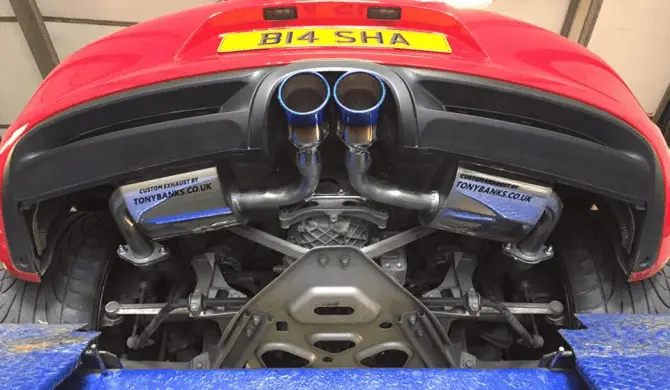
The cost of installing a cat-back exhaust system varies depending on the make and model of your car, as well as the type of system you choose.
In most cases, you can expect to pay between $200 and $600 for the parts, plus an additional $100 or so for labor.
Of course, the exact cost will vary depending on your specific situation.
If you’re looking to save money, you may be able to install the system yourself.
However, unless you’re experienced with auto repairs, it’s probably best to leave this job to a professional.
Where to buy and install a cat back exhaust?
There are a few different places to buy a cat-back exhaust system.
You can purchase a system from an aftermarket retailer, such as JEGS or Summit Racing. You can also buy a system directly from the manufacturer.
If you’re not sure where to start, it’s probably best to check with your local auto parts store.
Once you’ve chosen a system, you’ll need to decide where to have it installed. In most cases, it’s best to leave this job to a professional.
However, if you’re experienced with auto repairs, you may be able to install the system yourself.
No matter where you choose to buy and install your cat-back exhaust system, make sure to do your research to ensure that you’re getting a quality product.
There are a lot of cheaply made systems on the market, and you don’t want to end up with one of these.
Take your time to find a system that’s well-made and fits your car properly.
Once you’ve found the right system, you can enjoy the increased sound and performance it provides.
How to install a cat back exhaust?
Installing a cat-back exhaust system is a relatively straightforward process. However, it’s always best to consult your car’s owner’s manual before beginning any work.
In most cases, you’ll need to remove the old exhaust system before installing the new one.
Start by disconnecting the muffler from the rest of the exhaust system. Then, remove the bolts that hold the system in place. Once the old system is out of the way, you can start installing the new one.
Begin by connecting the muffler to the rest of the exhaust system. Then, bolt everything into place.
Once everything is bolted up tight, you can start the car and enjoy the improved sound and performance.
FAQs
Does cat back exhaust make a difference?
Yes, a cat back exhaust system can make a difference in the sound and performance of your car.
However, it’s important to note that the amount of difference will vary depending on the make and model of your car, as well as the type of system you choose.
In most cases, you’ll notice an improvement in sound, but the increase in power will be relatively small.
If you’re looking for a significant increase in performance, you’ll need to install other upgrades in addition to a cat-back system.
Can I install a cat back exhaust myself?
In most cases, it’s best to leave the installation of a cat-back exhaust system to a professional.
However, if you’re experienced with auto repairs, you may be able to install the system yourself.
If you do decide to install the system yourself, make sure to consult your car’s owner’s manual for specific instructions.
Do all cars have a cat back exhaust?
No, not all cars have a cat-back exhaust.
This type of system is typically only found on performance cars.
If you’re not sure if your car has a cat-back exhaust, consult your owner’s manual or take it to a professional for an inspection.
Is a cat back exhaust worth it?
Whether or not a cat-back exhaust is worth it depends on your individual needs and preferences.
If you’re looking for a significant increase in performance, you’ll need to install other upgrades in addition to a cat-back system.
However, if you’re simply looking for an improvement in sound, a cat-back system may be all you need.
It’s important to note that the cost of a cat-back exhaust can vary depending on the make and model of your car.
Do your research to find a system that fits your budget.
How much HP does a cat back exhaust add?
The amount of HP a cat-back exhaust adds will vary depending on the make and model of your car, as well as the type of system you choose.
In most cases, you can expect a small increase in power.
If you’re looking for a significant increase in HP, you’ll need to install other upgrades in addition to a cat-back system.
Is a cat back louder than a muffler delete?
In most cases, a cat-back system will be slightly louder than a muffler delete.
This is because the muffler delete removes the entire muffler, while the cat-back system only replaces the section of pipe between the catalytic converter and the exhaust tip.
As a result, there is less sound dampening with a cat-back system. Additionally, many people who choose a cat-back system also choose to add additional exhaust tips, which can further increase noise levels.
However, it is important to note that there are many variables that can affect sound levels, including the type of vehicle, the size of the exhaust tips, and the overall design of the exhaust system.
As a result, it is difficult to make definitive statement about which option will be louder without knowing more about the specific vehicle and exhaust setup.
How much mpg does a cat back exhaust add?
In most cases, you’ll see a small increase in fuel efficiency. A cat back exhaust can add anywhere from 1 to 5 mpg, depending on the make and model of the car.
The best way to maximize the fuel efficiency of a cat back exhaust is to pair it with other modifications, such as a cold air intake or performance tires.
With the right combination of modifications, it is possible to see a significant increase in mpg. For car enthusiasts who are looking to get the most out of their vehicle, a cat back exhaust is an essential addition.
Can I put a cat back exhaust on any car?
No, you can’t put a cat-back exhaust on any car. The make and model of your car will dictate what types of exhaust systems will fit.
Each car has a different exhaust system that is designed for that specific make and model. Putting a cat back exhaust on a car that it isn’t meant for can cause all sorts of problems, from decreased performance to engine damage.
If you’re not sure what kind of exhaust system your car has, or what kind of cat back exhaust would be compatible with it, the best thing to do is to consult with a professional mechanic or automotive specialist.
They’ll be able to help you find the right parts and make sure they’re installed correctly, so you can get the most out of your car’s performance.
Does cat back exhaust improve gas mileage?
Yes. In most cases, you’ll see a small increase in fuel efficiency. Cat back exhaust systems are often marketed as a way to improve gas mileage, but the truth is that they can have a very small effect on fuel economy.
In general, the main purpose of a cat back exhaust system is to improve engine performance by reducing back pressure.
This can lead to a small increase in power and torque, which may help the engine to run more efficiently.
However, the gains are usually quite small, and they are often offset by the increased weight of the exhaust system. As a result, it is unlikely that a cat back exhaust will have a significant impact on gas mileage.
Does a cat back exhaust have a muffler?
A cat-back exhaust system includes everything from the catalytic converter back. This means that it will include the muffler, but it may also include additional piping and tips.
The exact components included in a cat-back system will vary depending on the make and model of your car, as well as the type of system you choose.
What is the difference between a cat back and turbo back exhaust?
A cat back exhaust system includes everything from the catalytic converter back, while a turbo back system also replaces or adds piping before the turbocharger.
The primary benefit of upgrading to a cat back exhaust is increased performance, as it allows your engine to breathe more freely. This can lead to better throttle response and increased power output.
In addition, most cat back systems also offer weight savings over stock exhausts, as they are often made from lighter materials such as aluminum or stainless steel.
Turbo back exhausts offer even greater performance gains, but they can also be more expensive and difficult to install. As a result, they are usually reserved for more serious enthusiasts.
Is cat back exhaust legal in California?
Yes. Cat-back exhaust systems are legal in California, as long as they meet all of the state’s emissions requirements.
If you’re unsure whether or not a particular system is legal, check with the California Air Resources Board (CARB) to be sure.
Do I need to tune my car after installing a cat back exhaust?
No, you don’t need to tune your car after installing a cat-back exhaust system.
However, if you’re looking for the best possible performance, you may want to consider getting a custom tune.
A custom tune can optimize your engine for the specific mods you’ve made, which can lead to significant gains in power and torque.
Does a cat-back exhaust delete the catalytic converter?
No, a cat-back exhaust system does not delete the catalytic converter. The catalytic converter is typically located between the engine and the muffler, and it serves an important function in the emission control system.
A cat-back exhaust is designed to replace the section of piping between the muffler and the tailpipe, but it does not include the catalytic converter.
As a result, installing a cat-back exhaust will not delete the catalytic converter from your vehicle.
Can you pass smog with catback exhaust?
Yes, you can pass smog with a cat-back exhaust system. That’s because the catalytic converter in a cat-back system is located closer to the engine, where it can more effectively convert harmful emissions into harmless gases.
However, it’s important to note that some states have stricter emissions requirements than others.
If you’re unsure whether or not your car will pass smog in your state, check with your local DMV or emission testing agency to be sure.
How long does it take to install a cat back exhaust?
The time it takes to install a cat-back exhaust system will vary depending on the make and model of your car, as well as the type of system you choose.
In general, however, most systems can be installed in about 2 to 4 hours.
Which is better cat back or axle back?
There is no definitive answer to this question, as it will ultimately depend on your personal preferences.
Both types of exhaust systems have their own benefits and drawbacks.
Axle-back exhaust systems tend to be less expensive and easier to install than cat-backs. They also typically provide a deeper, more aggressive sound.
Cat-back exhaust systems, on the other hand, offer more power and torque gains. They also tend to be more durable and last longer than axle-backs.
Ultimately, the best way to decide which type of system is right for you is to take both into consideration and make a decision based on your specific needs and goals.
Does a cat back exhaust include a downpipe?
No, a cat-back exhaust system does not include a downpipe. A downpipe is a section of exhaust piping that connects the catalytic converter to the rest of the exhaust system.
A cat-back exhaust system replaces the section of piping from the catalytic converter back, hence the name. Cat-back systems do not include the downpipe because it is not necessary to replace this section of piping unless it is damaged.
Do I need a welder to install a cat back exhaust?
No, you do not need a welder to install a cat-back exhaust system. While welding is certainly the most permanent way to attach an exhaust system to a car, it’s not the only way. There are a variety of clamps and brackets that can be used to attach an exhaust system without welding.
However, if you’re planning on installing a turbo back system, you may need one to install the downpipe.
Cat back exhaust pass emissions?
Yes, a cat-back exhaust system will pass emissions. A cat-back exhaust system utilizes a catalytic converter to clean the exhaust fumes before they exit the vehicle. The catalytic converter is located between the engine and the muffler, and it contains a small amount of platinum and palladium.
These metals act as a catalyst, causing a chemical reaction that breaks down harmful pollutants into harmless gases. As a result, a cat-back exhaust system will usually pass emissions tests with flying colors.
In addition, many cat-back exhaust systems also include a muffler, which helps to reduce noise levels. As such, a cat-back exhaust system is an excellent choice for those who are looking for both improved performance and reduced emissions.
Final words
So what is a cat back exhaust system? In conclusion, a cat back exhaust system is an aftermarket product that can improve the performance of your car. It offers several benefits, such as increased power and torque, improved fuel economy, and a more aggressive sound.
However, there are also some drawbacks to consider before making a purchase. The cost of installation can be expensive, and not everyone will appreciate the louder noise level.
Ultimately, the decision whether or not to install a catback exhaust system is up to the individual driver.

